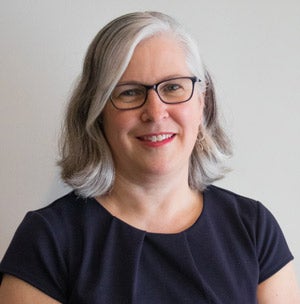The University of Toronto's artificial intelligence task force has released several high-level recommendations aimed at making the university an "AI-ready" institution while upholding its core missions and values.
From teaching and research to student services and administration, the Task Force on Artificial Intelligence's final report seeks to position U of T as a post-secondary leader in judiciously implementing this transformative technology.
The report's human-centric approach includes four broad recommendations: build AI knowledge and expertise across the university; create AI-ready infrastructure, including an "AI Kitchen" where projects can be safely and securely developed; establish AI response teams to provide technical and administrative support; and form an AI adoption advisory table to guide planning and decision-making.

"We don't have a choice around responding to AI. It's coming in through our windows and doors," says Susan McCahan, special adviser to the provost on artificial intelligence and associate vice-president and vice-provost, digital strategies.
"But we can lead by demonstrating how an organization takes a value-based, principles-based approach to thoughtfully working with the technology."
Originated by researchers such as Nobel Prize-winner and "godfather of AI" Geoffrey Hinton, a U of T University Professor emeritus, this class of technologies is poised to have a profound effect on higher education.
The task force emphasized that AI - including generative AI and large language models like ChatGPT, along with machine learning for pattern discovery and data analysis - is a rapidly evolving field. As such, the report avoids overly specific recommendations that could quickly become outdated.
While acknowledging risks such as bias and misuse, impacting the environment and undermining explainable decision-making, the report highlights potential benefits that range from enhancing accessibility and research collaborations to supporting learning, discovery and innovation.
To develop its recommendations, the task force engaged six working groups focused on teaching and learning, research, student services, administration, operations and institutional technology.
Timothy Chan, co-chair of the task force's research group and U of T's associate vice-president and vice-provost, strategic initiatives, says he and his colleagues see great potential.
"I feel very optimistic about AI - and I think we need to approach it with an open mind," says Chan, a professor of mechanical and industrial engineering in the Faculty of Applied Science & Engineering. "As with any new technology, there will be bumps in the road. But if we learn how to use it properly, it can be a great thing for the research community."
The research group recommended streamlining research administration with AI tools, developing protocols to ensure research integrity when AI tools are used, enhancing cross-disciplinary collaborations with AI and providing training for graduate students.
Chan notes that AI can dramatically accelerate literature reviews and data analysis. For example, he says, he helped create an AI model for the milk bank at Mount Sinai Hospital that predicts nutritional composition and generates a daily recipe for pooled breast milk given to hospitalized babies.
"We showed that as the fat content went up, the protein went up, and variability went down. It was a win across the board."
The operations and planning group, chaired by Ron Saporta, chief operating officer, property services and sustainability, began by experimenting with a range of AI tools to see what they could do with the technology.
The group concluded that AI could improve forecasting, automate repetitive tasks and enhance outcomes. To test this, the working group members developed a chatbot grounded in U of T's publicly available institutional procurement policies. When staff received a procurement question related to facilities and services, they inputted it into the chatbot, verified the response and sent it back.
"It turns out it was right most of the time," he says. "It helps our staff. Instead of spending time in low-value work of looking up the policy requirements, the AI engine did it."
Elsewhere at the university, McCahan, who is also vice-provost, innovations in undergraduate education, notes that an older form of AI is used in the Navi virtual assistant , which helps students find campus information such as mental health services. In addition, a pilot program to help faculty members build AI tutors for their courses is set to expand this fall.
Other initiatives include access to a secure version of ChatGPT for faculty and staff through U of T Library's Licensed Software Office , and the recent launch of Digital Learning Innovation's GenAI Literacy Open Educational Resources .
In the spring of 2024, Trevor Young, U of T vice-president and provost, established the task force to conduct university-wide consultations, identify risks and develop foundational principles. It was preceded by the Provost's Advisory Group on Generative AI, which was created more than a year earlier to assess generative AI tools used in teaching and learning, and create a set of FAQs . Other resources available to faculty, librarians, staff and students include U of T Libraries' Generative AI Tools and Copyright Considerations and the School of Graduate Studies' Guidance on the Appropriate Use of Generative Artificial Intelligence in Graduate Theses .
"I'm grateful to the task force for its important reports and recommendations," says Young. "These will guide U of T as we continue to embrace this transformative technology and bolster our role as an AI leader in research, pedagogy and more."
As for next steps, the university will now weigh how it can best adopt and implement the report's recommendations.
McCahan says the report ultimately outlines a flexible framework for embracing AI that takes risk into account, supports people in learning about the technology and ensures U of T maintains its world-leading approach.
"We may not get it perfectly right - I don't think anybody's going to get it completely right," she says. "But collaborating with the really smart people we have at U of T who understand this technology from different facets and perspectives is critically important and will help us make wise choices."






